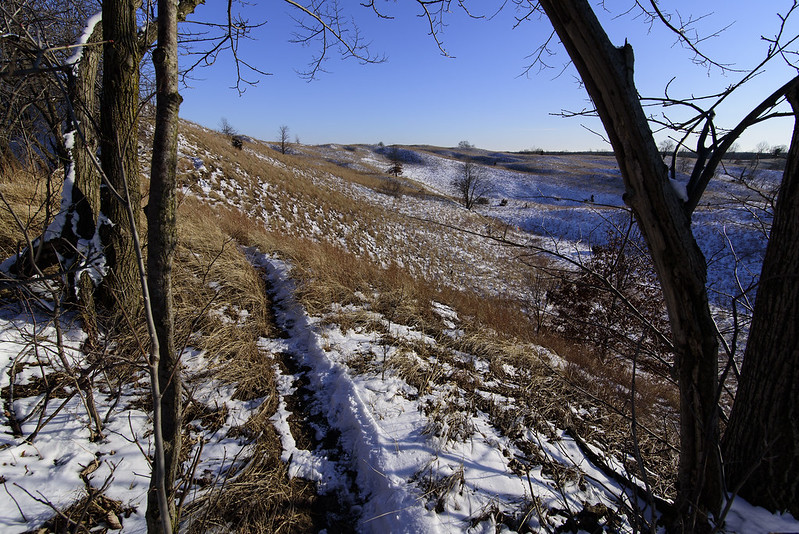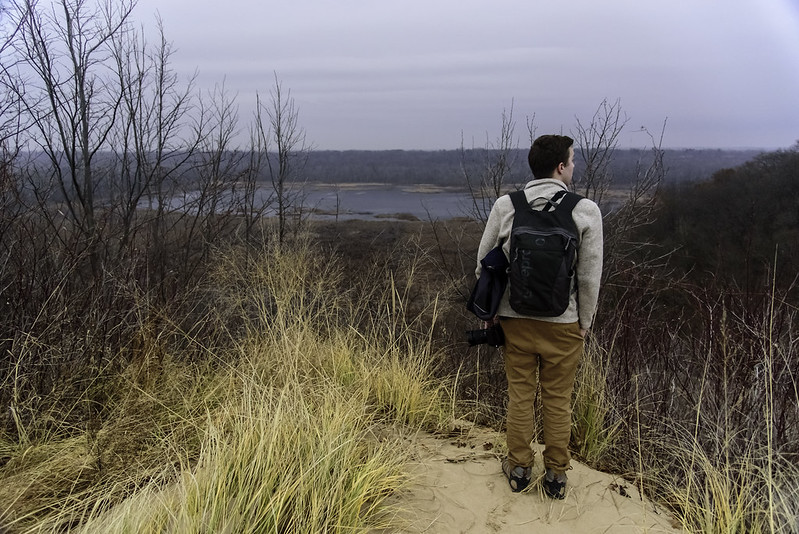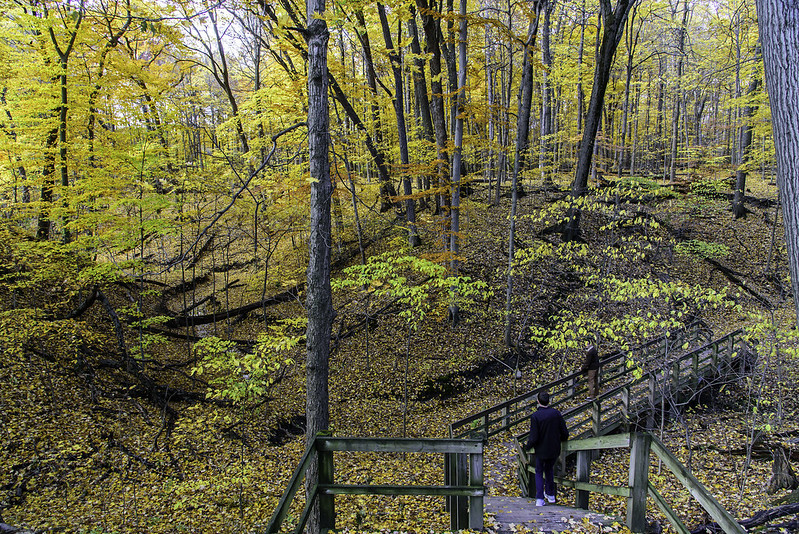
Recent temperatures below zero have begun to freeze the waterfalls in northern Illinois. Lake Falls, the tallest waterfall in Matthiessen State Park was impressive this afternoon. The mist created by the falling water froze to almost every surface nearby, including the bare tree branches which became flocked with ice.
Any of the mist that landed on the camera lens froze almost immediately, making photographing the falls any closer next to impossible.

A bit of knowledge of the canyon floor comes in handy in winter. Knowing where the deeper places are in the creek helps keep your feet dry. Stepping on thin ice could result in falling through, but if you know where the shallow areas are, breaking through will only get your feet wet. Good to know when you have quite a long walk back in zero degree weather.
The 45 foot tall Lake Falls is at the head of the upper dell area of Matthiessen State Park, draining from above, and created by the man-made dam built to create the lake.















































